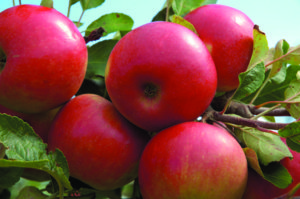 This month, I am writing about one of the best values in gardening—bare root fruit trees. These babies give you a lot of “bang for your buck!” “Freedom” and “Liberty” apples are two great cultivars that are supposed to need little-to-no spraying. Plums and pears are easy to grow in our area and need almost no care. I garden organically and use “tricks” to avoid spraying. I have a fence around my orchard and added a small chicken house, so my chickens are my pest control team. I sprinkle chicken scratch into the soil under the trees and the chickens will work in their fertilizer and scratch bugs in their daily scratchings.
This month, I am writing about one of the best values in gardening—bare root fruit trees. These babies give you a lot of “bang for your buck!” “Freedom” and “Liberty” apples are two great cultivars that are supposed to need little-to-no spraying. Plums and pears are easy to grow in our area and need almost no care. I garden organically and use “tricks” to avoid spraying. I have a fence around my orchard and added a small chicken house, so my chickens are my pest control team. I sprinkle chicken scratch into the soil under the trees and the chickens will work in their fertilizer and scratch bugs in their daily scratchings.
Select trees that are biggest around the stump with evenly branched tops when shopping. Once you get them home, fill a bucket with water and dump in some B12 or fish emulsion. Unwrap the tree roots and soak them in the bucket while you dig. The hole for the tree should be only slightly deeper, but quite a bit wider, than the root mass to allow the roots to get started. Put the tree in the hole, spreading out the roots and keep the graft above ground. Plant no deeper than the dirt line on the roots.
Contrary to popular theory, do not add anything to the native dirt when you plant abare root tree. They used to recommend adding potting soil or fertilizer. Do not! Tests over the years have shown that long term those practices do much more harm than good. I put dirt around the roots and use the hose to water the tree well to eliminate air pockets. After planting all the trees for the day, I apply light-colored interior semi-gloss paint to the trunks to lessen sun scald and to keep the borers out. Start painting the trunks all the way from the ground to the lowest branches. Once all trees are painted, wrap the bottom of trees with plastic and attach with duct tape or tape up the entire lower foot of the tree.
I use 8” sections of 4” corrugated drain line tubing to protect the trees from weed whackers or lawn mowers, whose damage can be fatal. I slit them up one side and place around the bottom of the tree after I paint the trunk of the tree. Then put the drain tubing around the very bottom down into the dirt.
I have clay soil so I do not leave a water catch basin at the base of trees as they would drown in winter. I use a timer on the drip tube. The timer comes on once a week in the summer for an hour. I run a drip tube around my tree area and stake the tube down with cut and bent sections of wire coat hangers. I put a 5 gph dripper on each side of the tree trunk and cover a 3′ section of dirt around the tree with mulch up to the drain tube to keep weeds down.
Once the trees have been in the ground a year, I use aged horse manure to mulch my trees. Do not put the mulch up against the tree bark. That can cause rot and kill the tree. Above all, have fun and enjoy your “edible landscaping.” I can’t think of a nicer addition to a yard than fruit trees and berry bushes. Some of my favorite tree sources are: Bi-mart; http://www.burntridgenursery.com;and
http://www.onegreenworld.com.
No Comments
Leave a comment Cancel